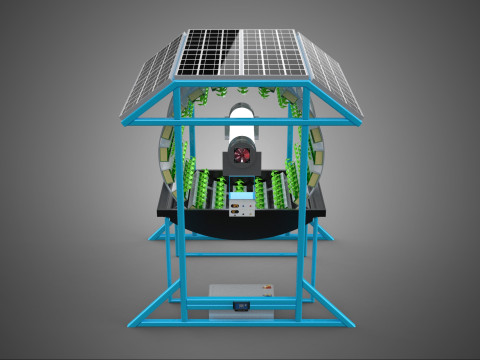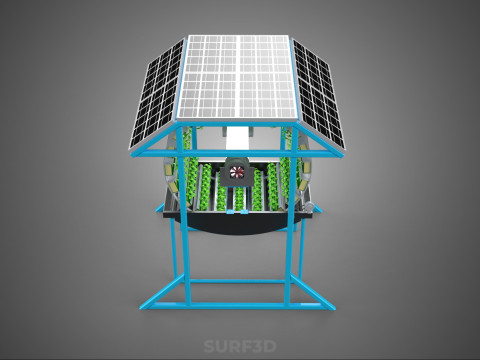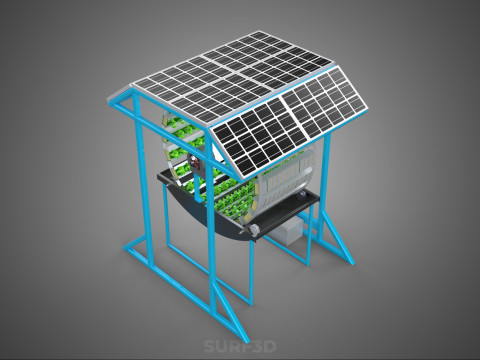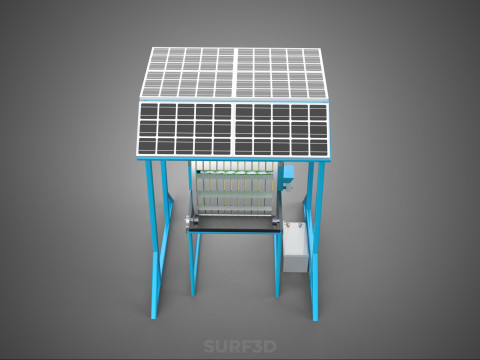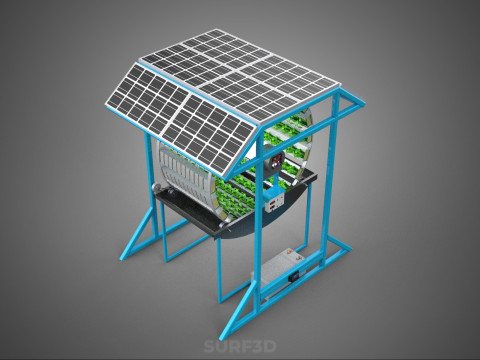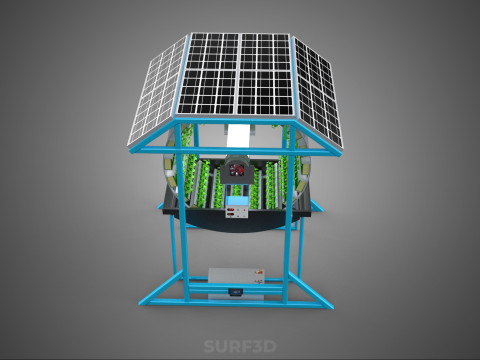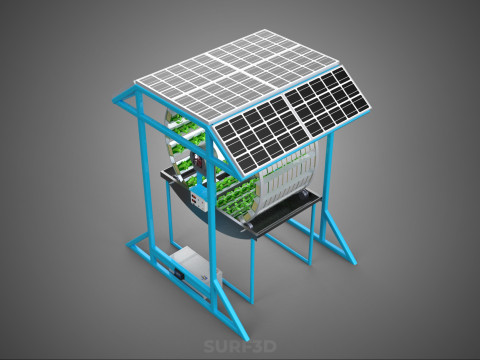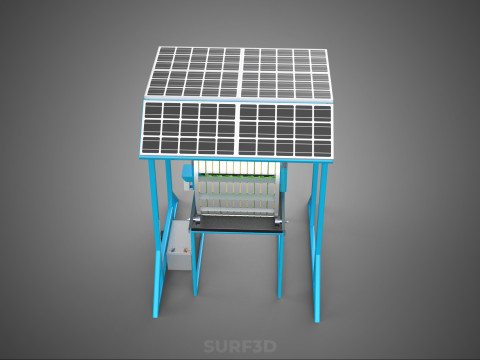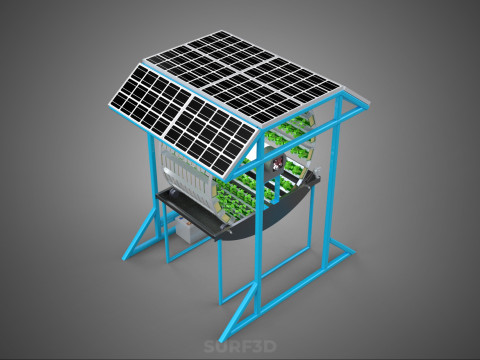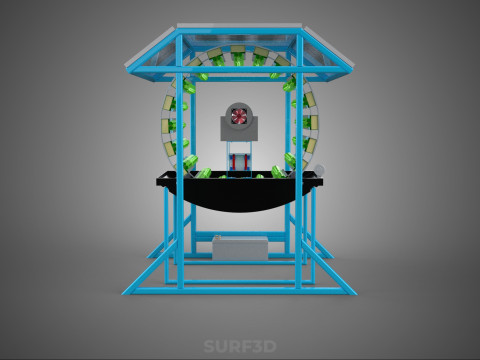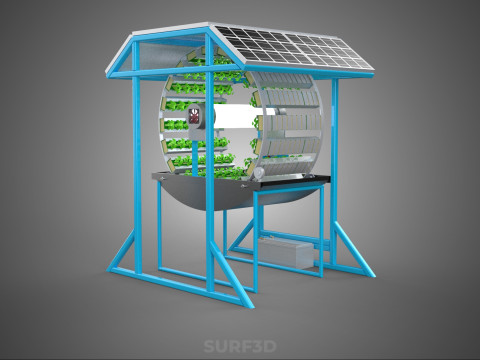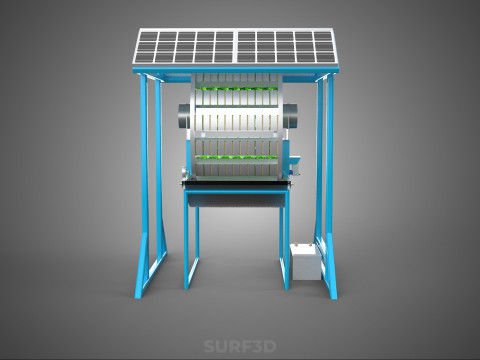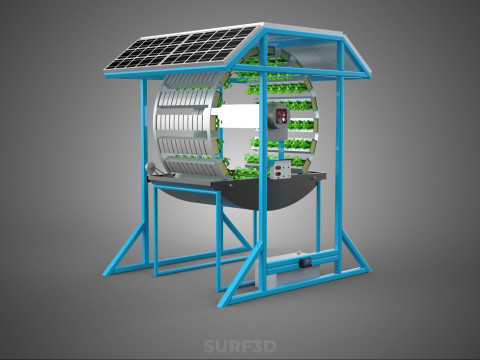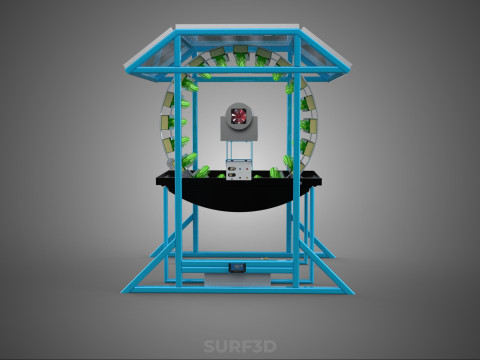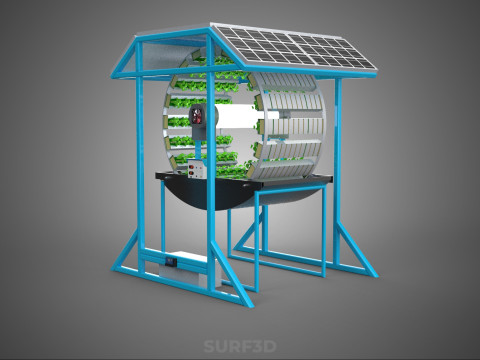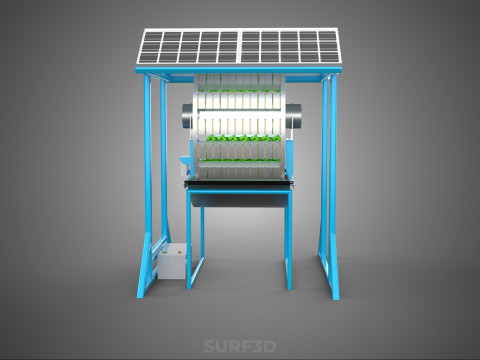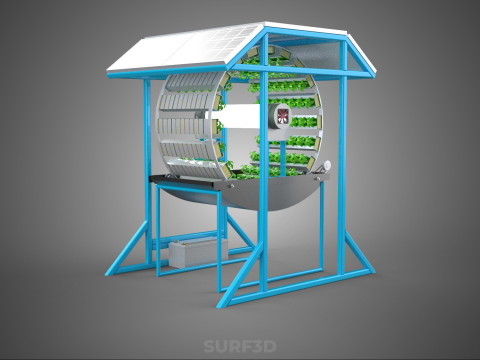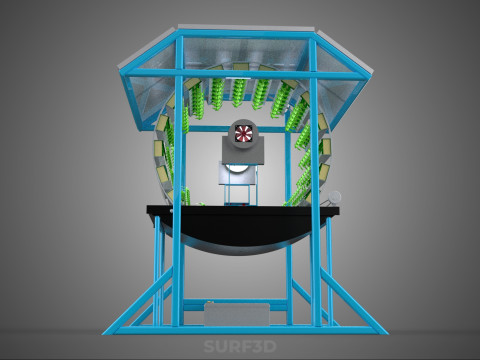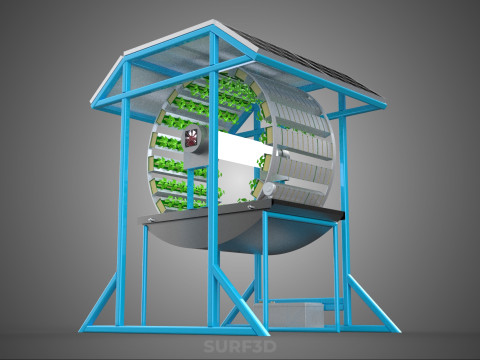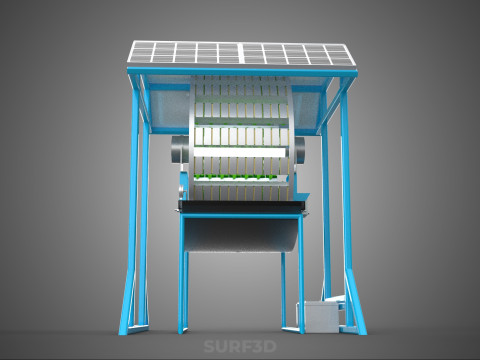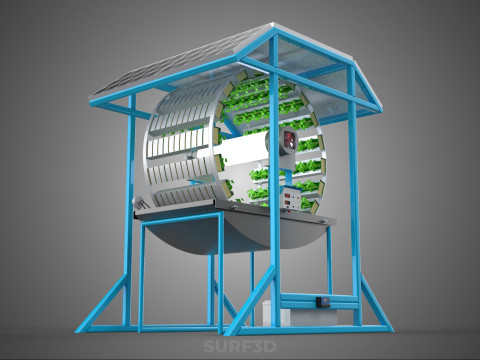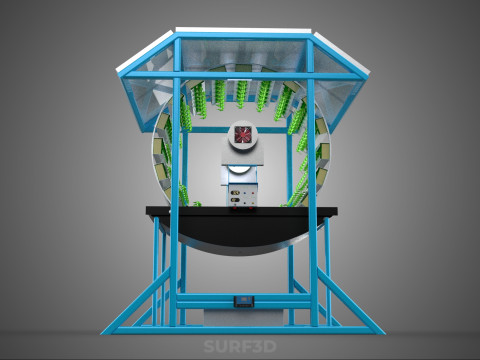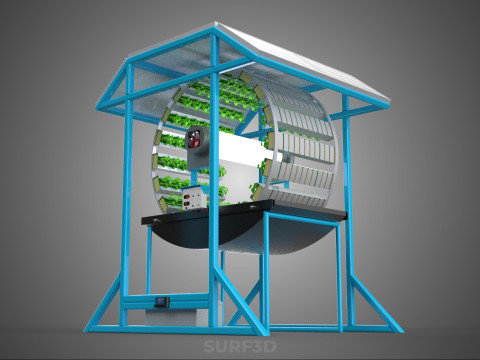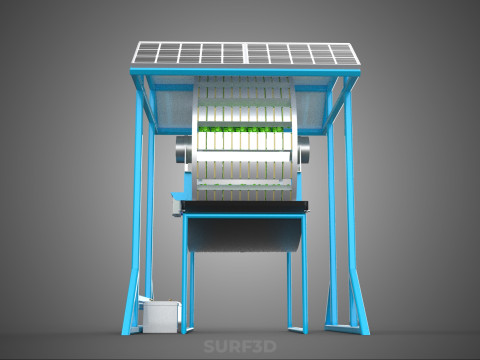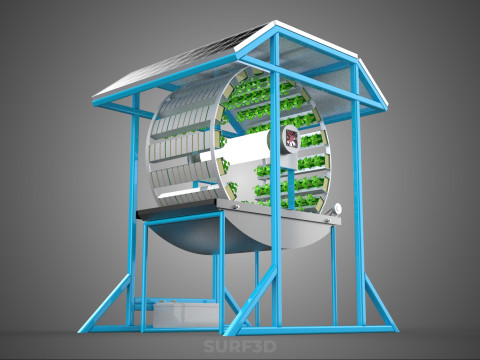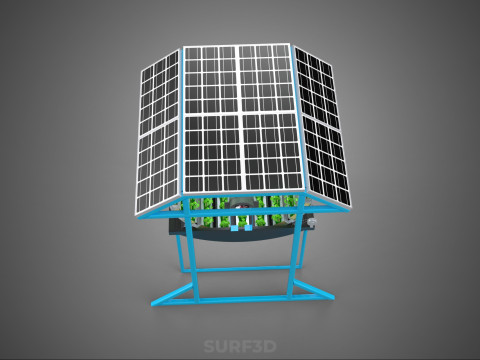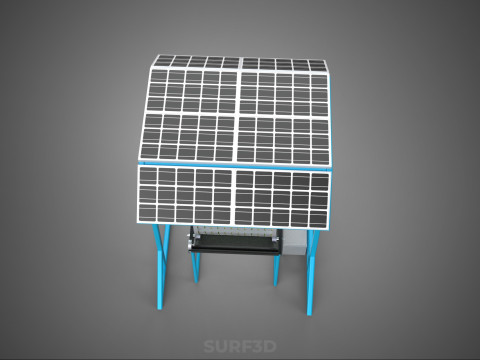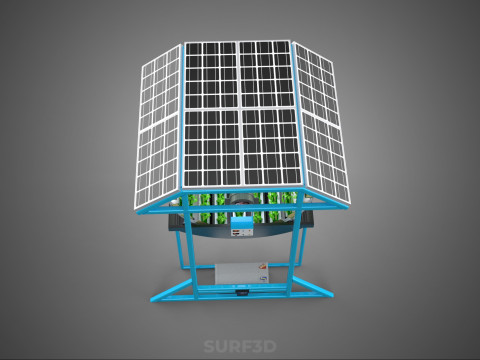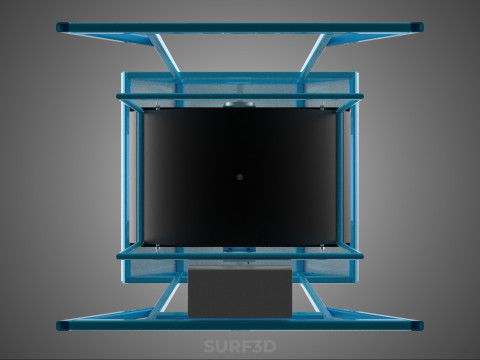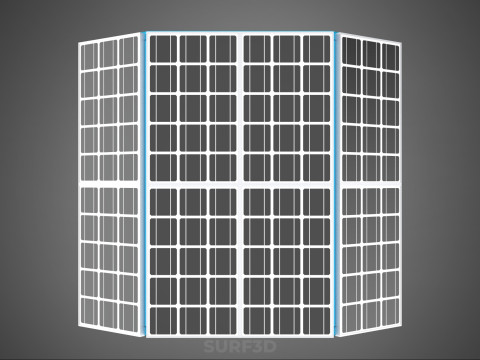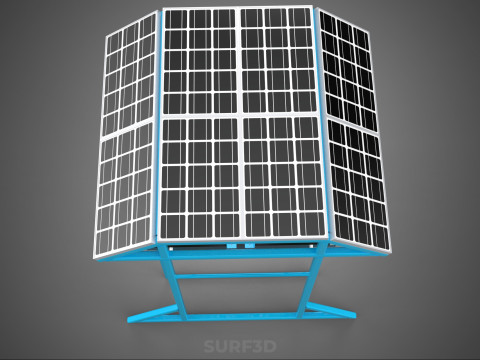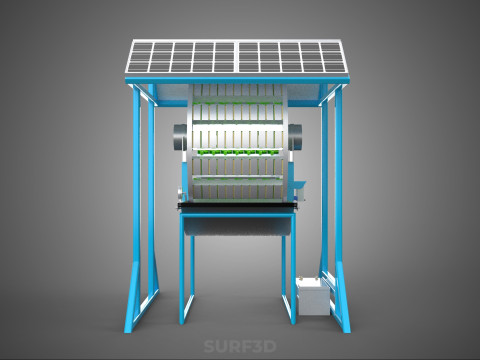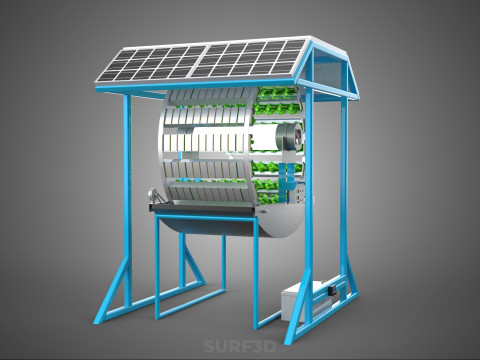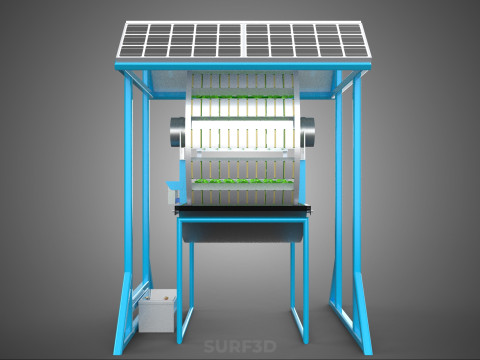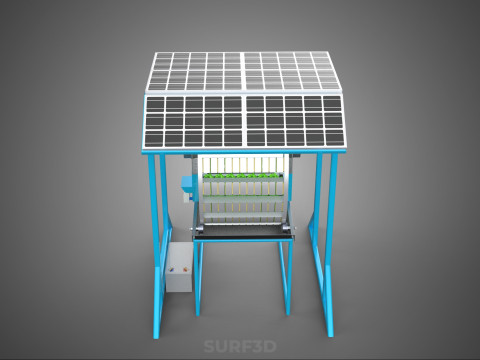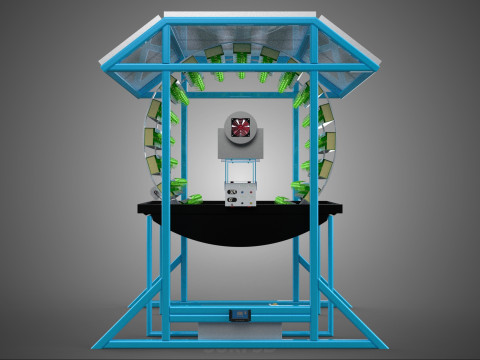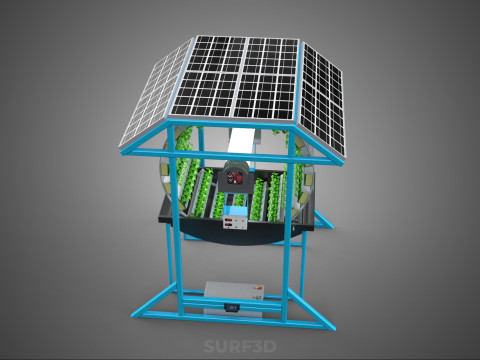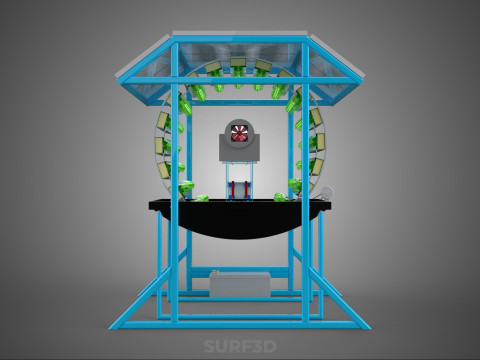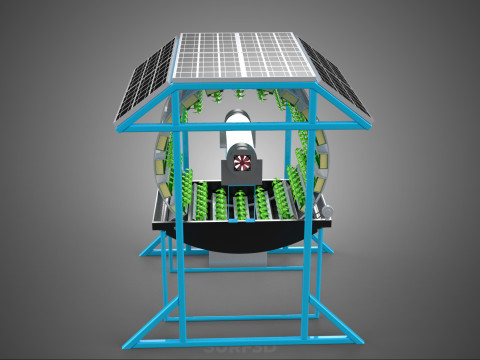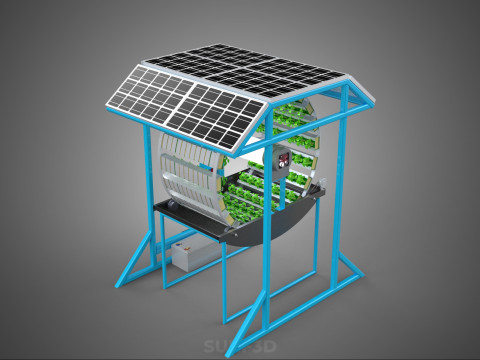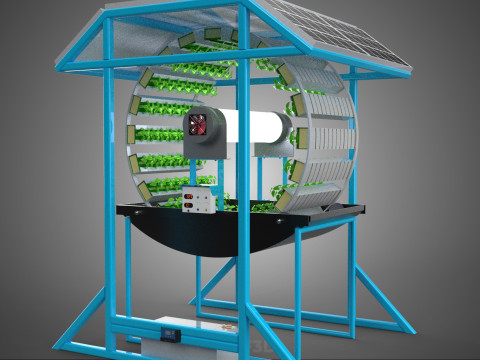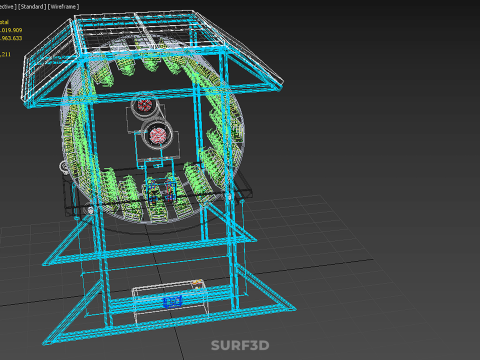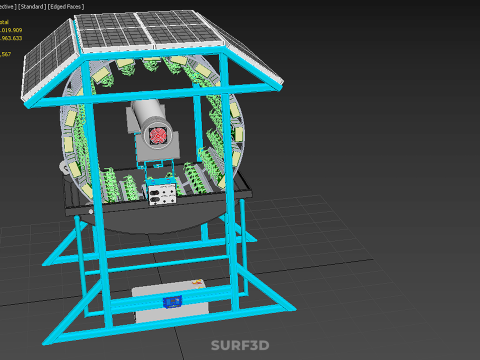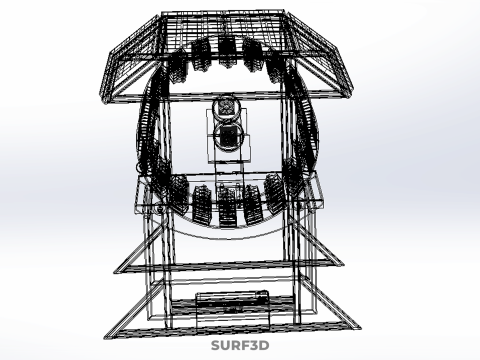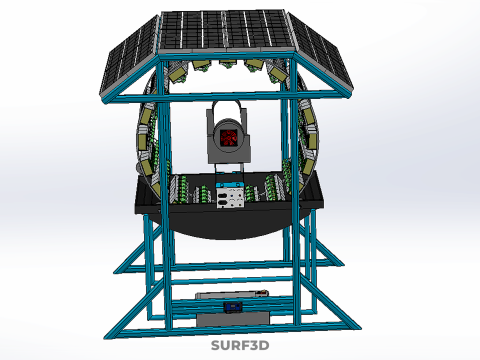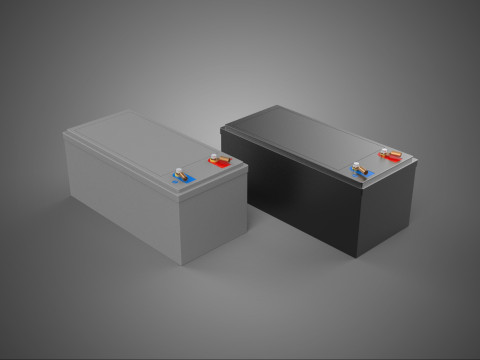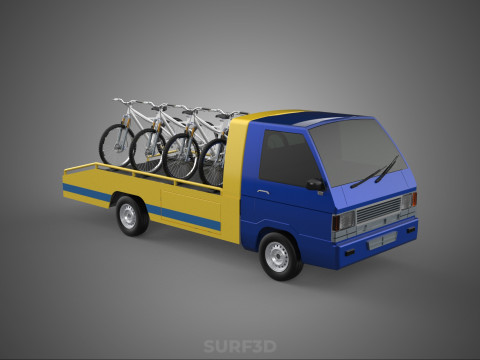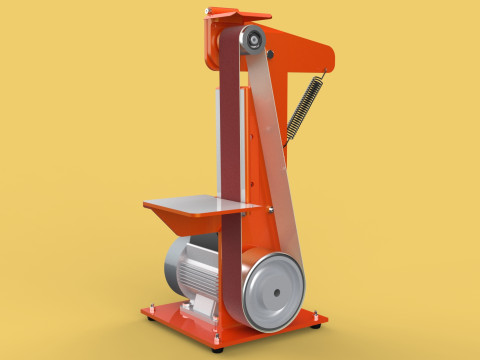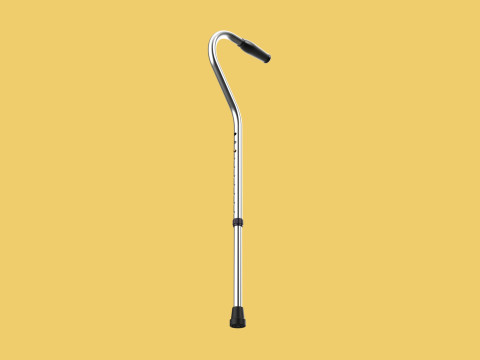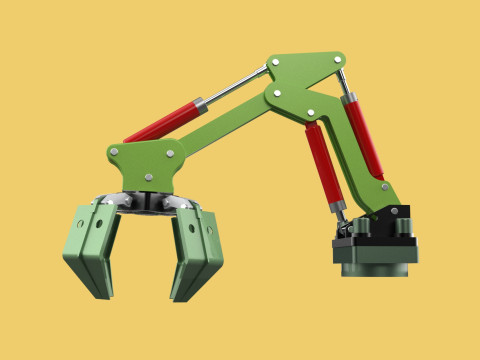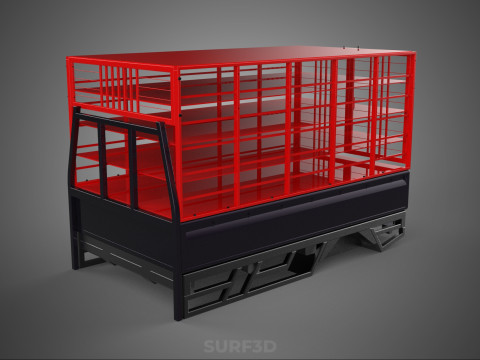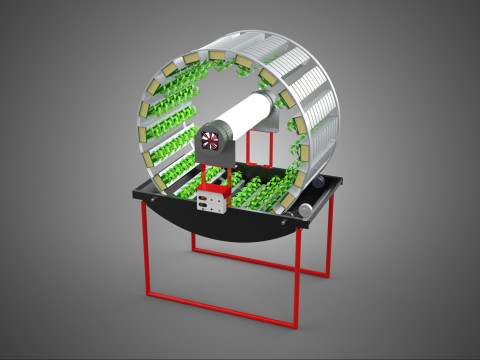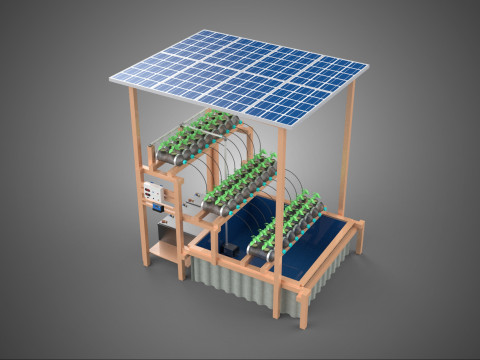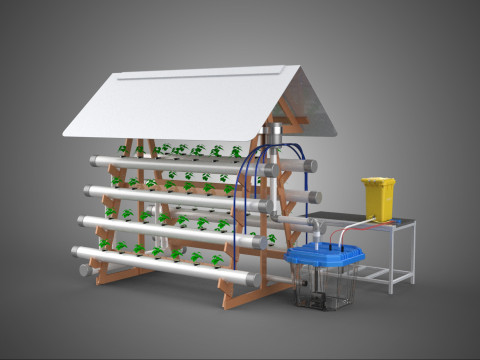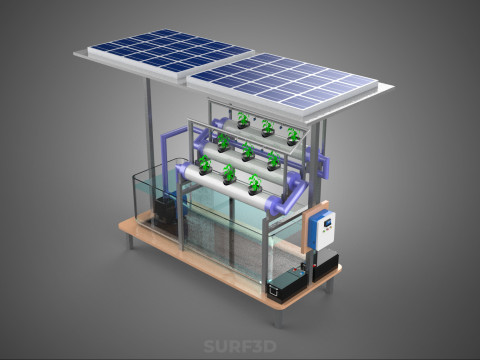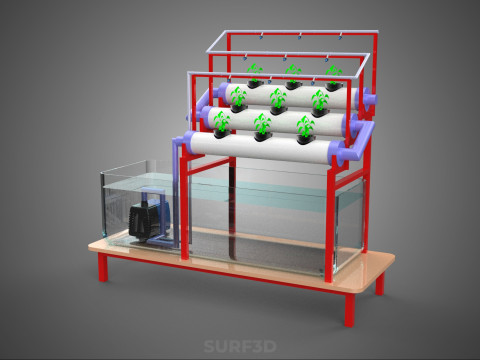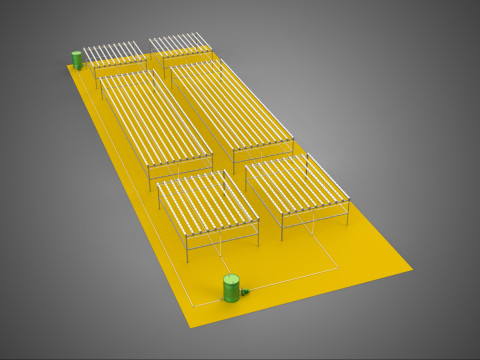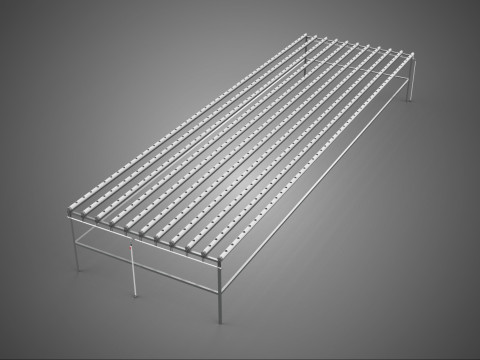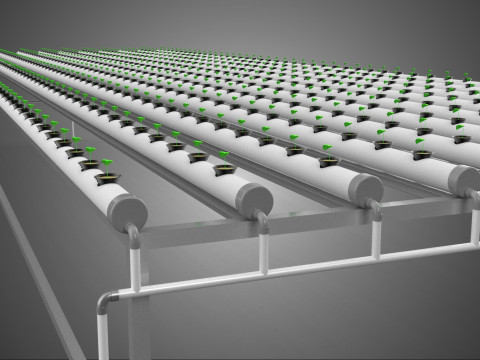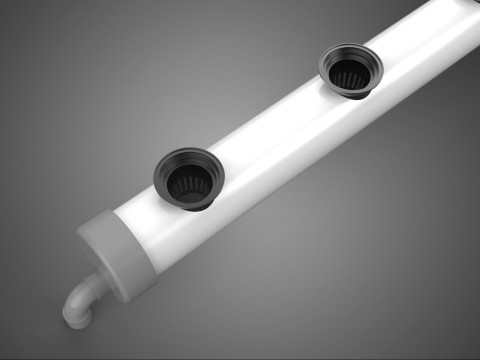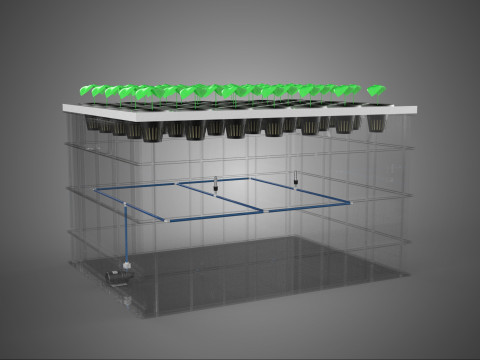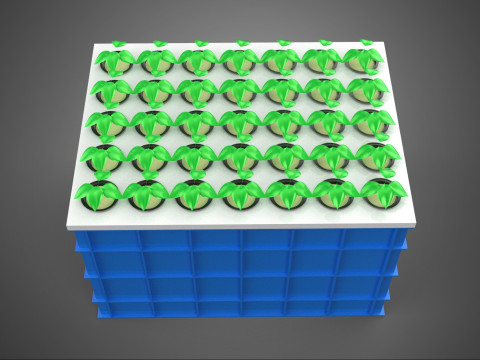SOLARPANEL IOT ROTARY HYDROPONIC GARTEN PLANT FARM SYSTEM RAD 3D Modell
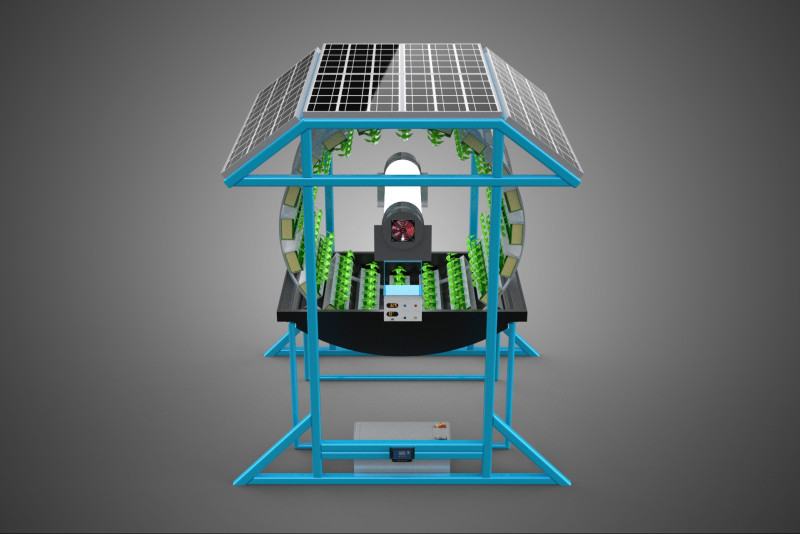
- Fordern Sie Produktunterstützung
- Verfügbare Formate:
- Artikel-ID:602147
- Datum: 2025-09-28
- Polygone:3019909
- Eckpunkte:1963633
- Animiert:No
- Texturen:No
- Rigged:No
- Materialien:
- Low-poly:No
- Sammlung:No
- UVW mapping:No
- Plugins Used:No
- Druckfertige:No
- 3D Scan:No
- Erwachsene:No
- PBR:No
- KI-Training:No
- Geometrie:Poly NURBS
- Unwrapped UVs:Unknown
- Betrachter:253
Beschreibung
High-quality 3D assets at affordable prices — trusted by designers, engineers, and creators worldwide. Made with care to be versatile, accessible, and ready for your pipeline.
Included File Formats
This model is provided in 14 widely *******ed formats, ensuring maximum compatibility:
• - FBX (.fbx) – Standard format for most 3D software and pipelines
• - OBJ + MTL (.obj, .mtl) – Wavefront format, widely used and compatible
• - STL (.stl) – Exported mesh geometry; may be suitable for 3D printing with adjustments
• - STEP (.step, .stp) – CAD format using NURBS surfaces
• - IGES (.iges, .igs) – Common format for CAD/CAM and engineering workflows (NURBS)
• - SAT (.sat) – ACIS solid model format (NURBS)
• - DAE (.dae) – Collada format for 3D applications and animations
• - glTF (.glb) – Modern, lightweight format for web, AR, and real-time engines
• - 3DS (.3ds) – Legacy format with broad software *******
• - 3ds Max (.max) – Provided for 3ds Max users
• - Blender (.blend) – Provided for Blender users
• - SketchUp (.skp) – Compatible with all SketchUp versions
• - AutoCAD (.dwg) – Suitable for technical and architectural workflows
• - Rhino (.3dm) – Provided for Rhino users
Model Info
• - All files are checked and tested for integrity and correct content
• - Geometry uses real-world scale; model resolution varies depending on the product (high or low poly)
• • - Scene setup and mesh structure may vary depending on model complexity
• - Rendered using Luxion KeyShot
• - Affordable price with professional detailing
Buy with confidence. Quality and compatibility guaranteed.
If you have any questions about the file formats, feel free to send us a message — we're happy to assist you!
Sincerely,
SURF3D
Trusted source for professional and affordable 3D models.
More Information About 3D Model :
A **Solar Panel IoT Rotary Hydroponic Garden Plant Farm System Wheel** represents a highly advanced, integrated approach to controlled environment agriculture (CEA), engineered for maximizing efficiency and sustainability in plant cultivation. This sophisticated system merges soilless hydroponic techniques with a space-optimizing rotary design, powered by renewable solar energy, and managed through Internet of Things (IoT) technology for autonomous monitoring and precise environmental control. Its primary objective is to facilitate optimal plant growth by enhancing resource utilization, minimizing spatial footprint, and ensuring stable, ideal growing conditions.
At its operational core, the system employs **hydroponics**, a method of cultivating plants without soil, utilizing mineral nutrient solutions delivered directly to plant roots in water. This soilless approach accelerates growth rates, significantly reduces water consumption compared to traditional agriculture, and mitigates issues associated with soil-borne pests and diseases. The system can adapt various hydroponic methodologies, such as Nutrient Film Technique (NFT), Deep Water Culture (DWC), or aeroponics, configured within its structure.
The distinctive **rotary wheel mechanism** is a fundamental design element, typically manifesting as a large, often vertically oriented, continuously rotating drum or wheel. This structure contains multiple individual plant sites or growth chambers. The continuous rotation serves several critical functions: it ensures uniform exposure of all plants to light (whether natural sunlight or supplemental LED grow lights), optimizes the distribution and absorption of the nutrient solution, and dramatically conserves space by enabling dense, multi-tiered cultivation within a compact area. This design effectively embodies principles of vertical farming, significantly enhancing yield per unit of land area.
The integration of **solar panels** provides the system with a sustainable and often off-grid power source. Photovoltaic cells convert sunlight into electricity, which is then used to power all active components: water pumps for nutrient solution circulation, any supplemental LED grow lights, environmental control systems (e.g., fans for air circulation, heating/cooling elements), and the entire IoT sensor and control infrastructure. This reliance on renewable energy substantially reduces operational costs and the carbon footprint, contributing to environmental sustainability.
**Internet of Things (IoT) technology** forms the intelligent backbone, enabling real-time data acquisition, sophisticated analysis, and automated control. A network of diverse sensors continuously collects critical environmental and physiological parameters. These typically include pH levels and Electrical Conductivity (EC) of the nutrient solution, water temperature, air temperature, relative humidity, and light intensity. This data is transmitted to a central processing unit, often accessible remotely via a cloud-based platform or dedicated mobile application. The IoT system intelligently processes this information to trigger automated responses, such as adjusting nutrient solution composition or dosage, activating pumps, modulating light cycles, or regulating environmental conditions. It can also provide alerts to operators regarding any anomalies, thereby maintaining optimal growing conditions with minimal human intervention and enhancing precision agriculture capabilities.
This integrated system offers substantial advantages, including drastically reduced water usage (up to 90% less than conventional soil farming), higher crop yields within significantly smaller footprints, the ability for year-round cultivation irrespective of external climatic conditions, the elimination of chemical pesticides, and improved nutrient use efficiency. Its applications are broad, encompassing urban farming initiatives, controlled environment agriculture in regions with limited arable land, humanitarian projects for rapid food production, educational facilities, and scientific research. The "Solar Panel IoT Rotary Hydroponic Garden Plant Farm System Wheel" represents a significant advancement in sustainable and precision agriculture, addressing contemporary challenges in food security and resource management.
While offering significant benefits, the implementation of such a sophisticated system does entail an initial capital investment, requires technical expertise for optimal setup and ongoing maintenance, and necessitates careful calibration of its interconnected subsystems. Nevertheless, continuous advancements in sensor technology, artificial intelligence, and energy storage solutions are progressively enhancing its accessibility, scalability, and overall performance, solidifying its role as a pivotal technology for future food production systems.
KEYWORDS: Hydroponics, Soilless culture, Vertical farming, Controlled Environment Agriculture (CEA), Internet of Things (IoT), Smart farming, Precision agriculture, Solar power, Renewable energy, Sustainable agriculture, Urban farming, Automated system, Remote monitoring, Data analytics, Rotary hydroponics, Plant cultivation, Resource efficiency, Water conservation, Energy efficiency, Crop yield optimization, Environmental control, Nutrient management, Sensors, Actuators, Greenhouse technology, Food security, Indoor farming, Off-grid farming, Agricultural innovation, Automated irrigation
Sie brauchen mehr Formate?
Falls Sie ein anderes Format benötigen, eröffnen Sie bitte ein neues Support-Ticket und fragen Sie danach. Wir können 3D Modelle in folgende Formate konvertieren: .stl, .c4d, .obj, .fbx, .ma/.mb, .3ds, .3dm, .dxf/.dwg, .max. .blend, .skp, .glb. Kostenlose FormatkonvertierungWir konvertieren keine 3D Szenen und Formate wie .step, .iges, .stp, .sldprt usw!
Nutzungsinformationen
SOLARPANEL IOT ROTARY HYDROPONIC GARTEN PLANT FARM SYSTEM RAD - Sie können dieses lizenzfreie 3D Modell gemäß der Basis- oder erweiterten Lizenz sowohl für private als auch für kommerzielle Zwecke verwenden.Die Basislizenz deckt die meisten Standardanwendungsfälle ab, darunter digitale Werbung, Design- und Visualisierungsprojekte, Social-Media-Konten von Unternehmen, native Apps, Web-Apps, Videospiele sowie physische oder digitale Endprodukte (sowohl kostenlos als auch kostenpflichtig).
Die Erweiterte Lizenz umfasst alle unter der Basislizenz gewährten Rechte ohne Nutzungsbeschränkungen und ermöglicht die Verwendung des 3D Modells in unbegrenzten kommerziellen Projekten unter Lizenzgebührenfreiheit.
Mehr lesen


 English
English Español
Español Deutsch
Deutsch 日本語
日本語 Polska
Polska Français
Français 中國
中國 한국의
한국의 Українська
Українська Italiano
Italiano Nederlands
Nederlands Türkçe
Türkçe Português
Português Bahasa Indonesia
Bahasa Indonesia Русский
Русский हिंदी
हिंदी